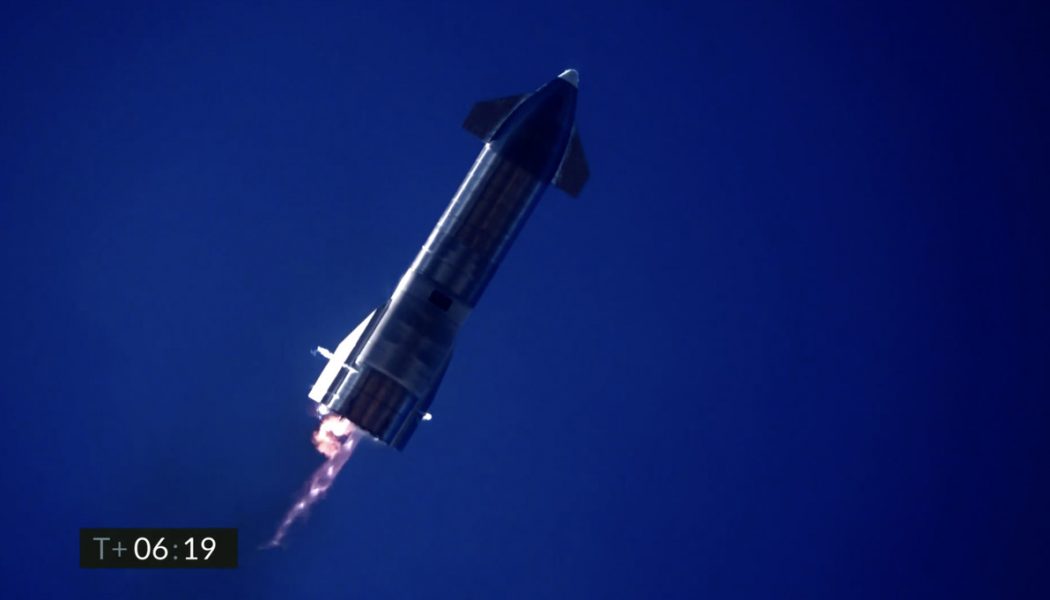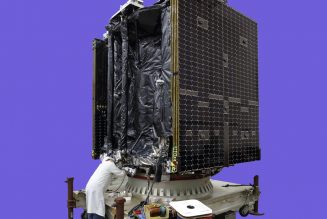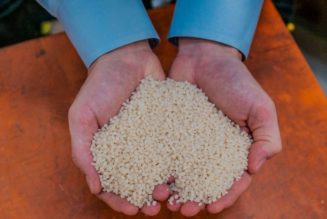SpaceX’s latest Starship prototype launched on Tuesday, soaring miles above its South Texas facilities in a successful flight demonstration before exploding during the landing attempt. It’s the second failed landing in a row, after a previous prototype, SN8, launched and failed to stick the landing in December.
This week’s launch demo — one of many in the books already — follows weeks of tension between SpaceX and the Federal Aviation Administration, which approves test launches like this one. During its high-altitude test launch with SN8 two months ago, the company violated its FAA launch license. This triggered an investigation that held up today’s SN9 flight and frustrated SpaceX CEO Elon Musk, The Verge reported last week.
In a statement Tuesday morning announcing SN9 was clear to fly, the FAA confirmed the previous violation: Before SN8 launched, the agency had denied a request from SpaceX to waive public safety limits associated with the flight, but SpaceX launched the thing anyway. It’s still unclear what safety limits SpaceX wanted to waive in connection with the launch. The FAA declined to specify and SpaceX has yet to respond for comment.
On Tuesday, with fresh FAA approval for a flight plan that “complies with all safety and related federal regulations,” the 16-story-tall rocket lifted off from SpaceX’s Boca Chica, Texas test facilities around 3:30PM ET under clear skies, reaching an altitude of 6.2 miles (10km) — a bit shorter than SN8’s target altitude of 7.7 miles. After that, SN9 shut down its three engines to begin a free-falling dance back to Earth, tilting on its side to test new aerodynamic flaps and attempt a “belly flop” maneuver. If all had gone well, the rocket would have landed vertically.
:no_upscale()/cdn.vox-cdn.com/uploads/chorus_asset/file/22277204/Screen_Shot_2021_02_02_at_3.31.59_PM.png)
Instead, SN9 slammed into the ground at a roughly 45-degree angle, perishing in an explosive fireball just like SN8. “We had another great flight up to the 10km apogee… we’ve just gotta work on that landing a little bit,” said SpaceX engineer John Insprucker, who usually only narrates the company’s live video feeds for routine Falcon 9 launches.
The FAA opened an investigation into the SN9 landing explosion, it said in a statement Tuesday night, adding that “although this was an uncrewed test flight, the investigation will identify the root cause of today’s mishap and possible opportunities to further enhance safety as the program develops.”
The landing explosion sprayed debris on SN10, another Starship prototype that stood ready for SpaceX’s next test flight. The company wheeled SN10 out of its towering, rocket-shaped facilities last Friday night to make room for future prototype construction.
On the live stream, Insprucker reminded SpaceX’s audience that the SN9 flight, though it ended in a dramatic explosion, was a test, and a number of test objectives were met. It was the “second time we’ve flown Starship in this configuration, we’ve got a lot of good data, and the primary objective to demonstrate control of the vehicle in the subsonic re-entry looked to be very good. And we will take a lot out of that,” he said.










